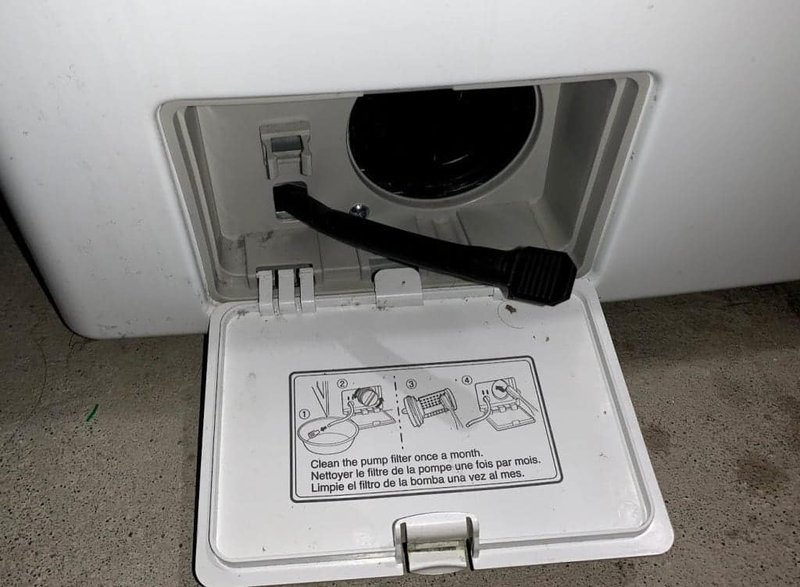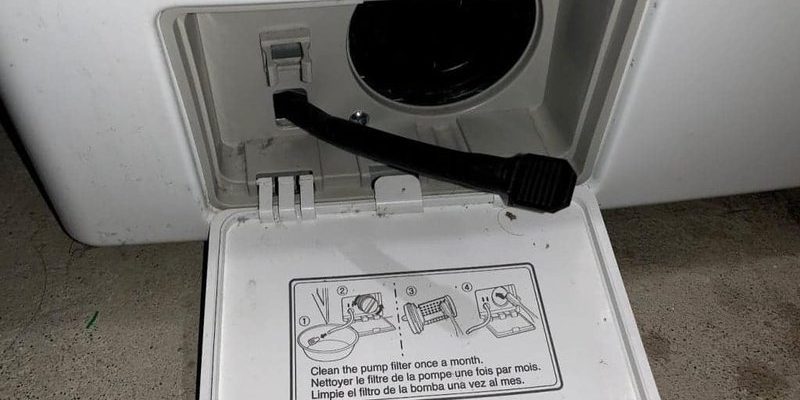
Imagine your washing machine as a hardworking assistant, diligently completing tasks, but every now and then, a tiny roadblock like a coin or sock might stop it from doing its job efficiently. It’s like when you’re working, but someone keeps asking you questions — it slows you down! This error code doesn’t mean your washer is broken; it’s just asking for a little help to clear the way so it can function smoothly again. Let’s dive deeper into why this error pops up and what you can do about it.
Understanding the Error Code OE on LG Washing Machines
The “OE” error code is your washing machine’s way of signaling a problem with its drainage system. It’s not just some random letters thrown together — it’s an abbreviation for “overflow error,” meaning water isn’t evacuating as it should. Imagine trying to pour water into a cup that’s already full; obviously, it’s going to spill over. Your washer tries to avoid such a situation by alerting you early with this code.
When the water doesn’t drain properly, it’s usually because there’s something blocking the path. This blockage can happen in the drain pump filter, the hoses, or even within the pump itself. Picture this: you accidentally drop a small toy into a narrow tube. The toy might get stuck, and no matter how much you push, it just won’t move. That’s exactly what happens inside your washer when small items or debris cause a blockage.
The good news? Tackling this issue doesn’t require a PhD in appliance repair. Although it might sound technical, resolving the “OE” code can often be done with a little investigation and some handy work. But fear not! Even if the solution isn’t apparent initially, you’ll likely need only a few household tools and a bit of patience to set things right again. Let’s explore each potential cause in more detail.
Common Causes of Error Code OE
The most frequent culprit behind the “OE” error code is a clogged drain pump filter. Over time, debris like lint, coins, and small clothing items can accumulate in this filter, preventing water from flowing out. Think of it like a hairball clogging your sink’s drain. When the filter is overloaded with such materials, your washer can’t drain the water effectively, triggering the code.
Another common reason is a kinked or blocked drain hose. Just like a garden hose that’s been twisted too tightly, a kink in your washing machine’s hose can stop water dead in its tracks. Sometimes, foreign objects inadvertently find their way into the hose during a cycle, leading to blockages. It may surprise you what kind of small objects can slip through unnoticed!
Lastly, the drain pump itself might be the issue. If it’s malfunctioning or jammed, it won’t be able to expel water efficiently. Imagine relying on a broken pump to inflate a bicycle tire—it’s just not going to work well. Although less frequent, mechanical issues with the pump require a closer look and might need professional intervention.
In summary, the “OE” code doesn’t spell disaster. Sure, it’s a bit of an inconvenience, but taking the time to check these areas can help you solve the problem efficiently.
What You Can Do to Fix It
Start with the simplest solution: check and clean the drain pump filter. You’ll find it behind the panel at the bottom front of your washer. Carefully remove the panel, and you’ll see a round, cap-like structure. Gently unscrew it and be prepared for some water to spill out, so have a towel handy. Once open, clean out any debris and rinse the filter under running water.
Next, inspect the drain hose. Ensure there are no kinks or bends, and remove any visible obstructions. If needed, detach the hose and run water through it to clear any block. You’d be amazed at how a simple adjustment can restore your washer to perfect working order.
If these steps don’t solve the issue, checking or replacing the drain pump might be necessary. While this can be a bit more involved, you might find video tutorials helpful. However, if you’re not comfortable, it’s worth consulting a professional to avoid further complications.
Overall, regular maintenance and prompt attention to small issues can help extend the life of your washing machine. By staying vigilant and acting quickly, “OE” errors won’t stand a chance of interrupting your laundry routine. With these tips, you’re ready to tackle the issue head-on, ensuring your washer runs smoothly.
